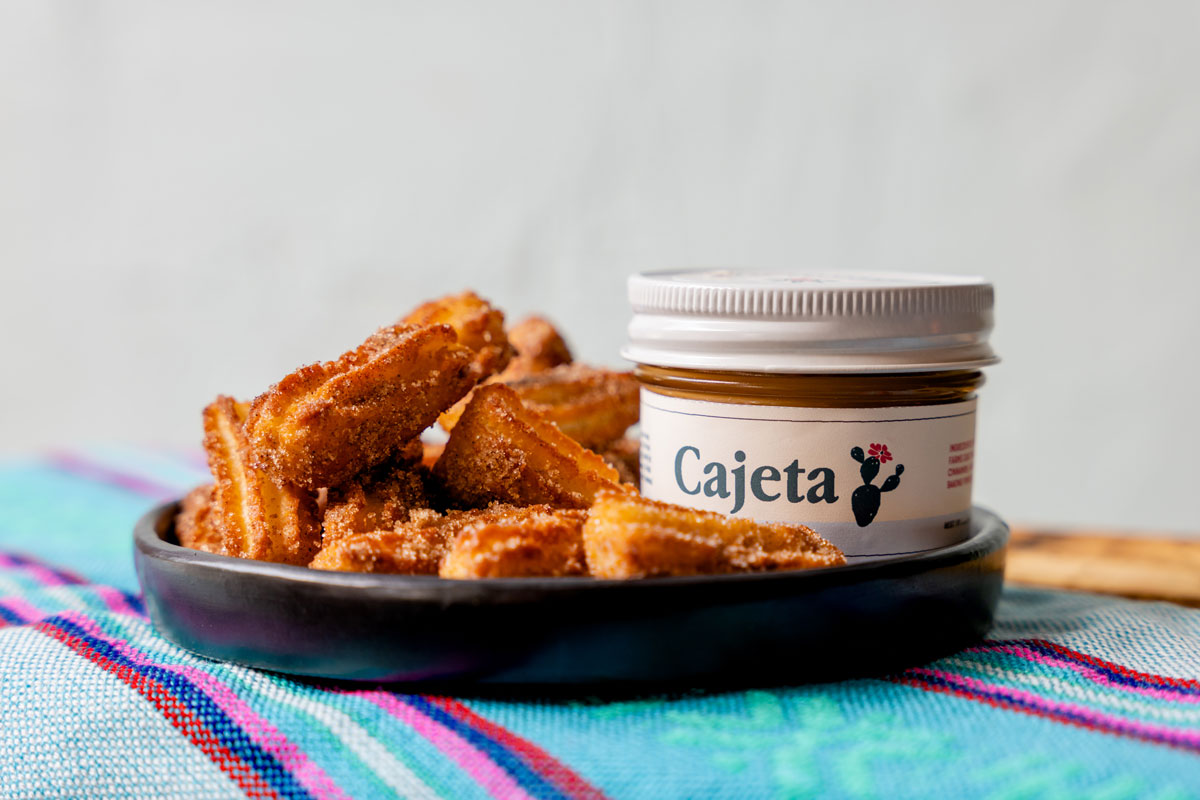
Photograph by Laura Stone
When Atlanta restaurants closed their dining rooms at the beginning of the pandemic, nearly all began offering takeout, even if they never had before—a measure meant to keep them alive, and for many just a temporary solution. But restaurateurs also began experimenting with other ways to make money, like selling packaged foods in addition to their usual menu items. At Snackboxe Bistro in Doraville, pouches of spicy chili chips and Lao-style beef jerky appeared on a shelf by the register; in Krog Street Market, Ticonderoga Club began offering bottled cocktails along with its takeout menu. For those places and others, the experimentation proved a hit: Though sit-down dining has made a tenuous comeback this year, the restaurant-as-grocer is an innovation that’s likely to stick around.
(Check out our roundup of many fabulous items available in Atlanta today here.)
“I think a lot of small businesses realized—and I know for us it was true—that people wanted a way to support us when they couldn’t dine in,” says Rosa Thurnher, co-owner of El Ponce, a Mexican restaurant in Poncey-Highland. Even before the pandemic, Thurnher and co-owner Jarina Naone had a side project selling food at Freedom Farmers Market. But with the dining world in disarray, the pair saw an opportunity to offer packaged goods out of their restaurant too—as a way to “still be relevant to people who didn’t want to be in person,” Thurnher says. Now El Ponce sells frozen tamales and empanadas, aguas frescas, chamoy, and various salsas to take home; Thurnher and Naone also transformed El Bar, previously known for its revelry, into a boutique called Tiendita, featuring wares and crafts from women and indigenous-owned brands.
For some restaurant owners, CPGs—consumer product goods—weren’t a blip on the radar before the pandemic. “We had such a hard time even keeping up with all the mechanics and systems of restaurant operation that we hadn’t even ever looked in that direction,” says Kara Hidinger, co-owner of Staplehouse—which Bon Appetit declared, in 2016, to be the best new restaurant in the country. (Atlanta magazine was roughly as effusive.) “But, you know, when all of that shut down and you’re looking at a blank slate, you have to get creative on utilizing the space we have and put ourselves at home.”
Last October, under chef and co-owner (and Hidinger’s husband) Ryan Smith, the restaurant evolved into a market selling charcuterie, pastries, and provisions. Adding packaged items made in-house seemed like a natural next step, Hidinger says, adding that Smith “was like, how do we get creative and take this name, Staplehouse, back to the origin?” Today shoppers can take home everything-flavored crackers, pasta made with Root Baking’s flour, and a variety of condiments, including XO sauce and salsa macha—all produced in the Staplehouse kitchen.
As restaurants embrace these new categories, they’re also looking to present the goods in more polished ways than the typical plastic quart container. Hidinger worked with her older brother Scott, a creative director based in Los Angeles, on branding. “We started thinking about stripping down all the fancy and it just being like really direct and approachable, but sort of lighthearted and fun,” says Hidinger.
At El Ponce, Thurnher and Naone worked with Whitney Bolster of Ampersand, an Atlanta-based branding studio whose work appears locally in hotels like the Wylie and nationally with brands like the Honey Pot. Bolster works to give products a distinctive visual identity (punchy red and vibrant florals in El Ponce’s case), and helps craft copy that contains details about the product. When brands reach out to Bolster and her team, it’s usually because they’re at a point where they’re ready to scale up. And while it can be a challenge for brands starting from scratch to introduce CPGs to markets, restaurants have an opportunity to organically test out what works, says Bolster: “With El Ponce, the products that they’re packaging are beloved items that have been available in the restaurant. Some of the items I feel like Rosa and Jarina have developed as a result of people taking food to go.”
Some restaurants outsource their packaged foods by working with brands like Grant Park’s Beautiful Briny Sea, which typically sells infused sea salts and sugar blends out of retailers like Williams-Sonoma and Whole Foods. Owner Suzi Sheffield says that, increasingly, she’s been hearing from chefs interested in partnering with her to make their own salt blends to sell. This is primarily financially driven, but the pandemic gave chefs the opportunity to scratch a creative itch, says Sheffield. “At the beginning of the pandemic, everything just shut down for a minute and you had to reinvent quickly. But I think it sort of lent itself to finally checking off a list, like, Hey, I’ve always wanted to do this.”
When chefs like Jennifer Hill Booker and Kevin Gillespie (Gunshow, Cold Beer, et al) work with Sheffield, they get free rein of her studio in Grant Park. Experimenting with and blending their seasonings there, they can then choose a vessel for the mixture—a glass jar with a boutique scoop is desirable, but also more expensive than a tin container. Because Sheffield’s products are shelf-stable, chefs don’t have to worry about selling them as quickly. It’s not as cheap as producing and packaging food in-house, but still potentially profitable.
Now that Staplehouse is settling into its market concept, Hidinger plans on selling packaged food for the long haul. “For us it’s not a temporary pivot,” she says. “It is a long-term goal, to grow the market and continue to operate with this model. So I hope that for our small business and other small businesses, the package goods are here to stay.”
Packaged foods have helped restaurants remain viable, but they’ve also helped reframe a daunting challenge into something positive, says Bolster: “When we think of resilience, we think of strength—you can withstand anything, you’re tough. But really, it’s about flexibility and being willing to change your story and change your path based on new intelligence. And I think that this packaging opportunity really came out of that kind of mindset that they have.”










![The North Carolina Museum of Natural Sciences’ newest exhibit is a [pre]historic first](https://cdn2.atlantamagazine.com/wp-content/uploads/sites/4/2024/04/DD-3-100x70.jpg)


